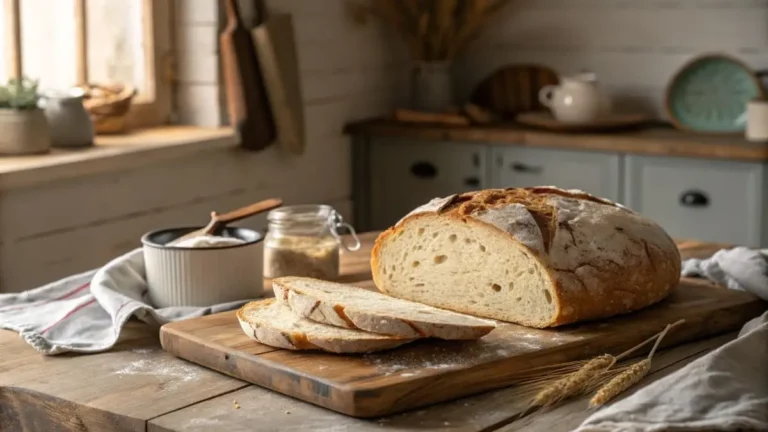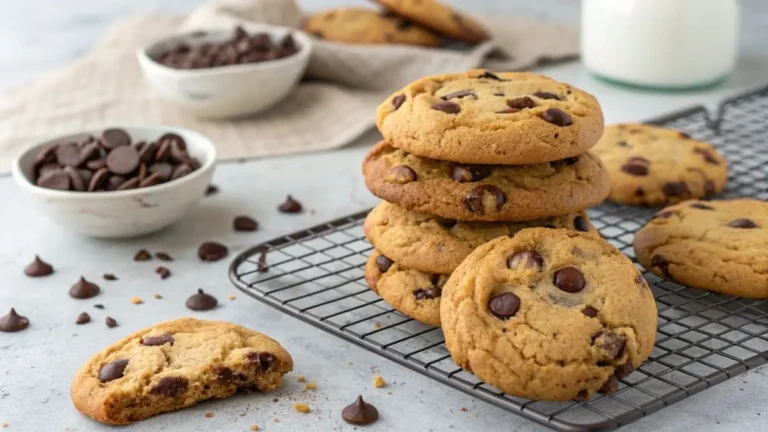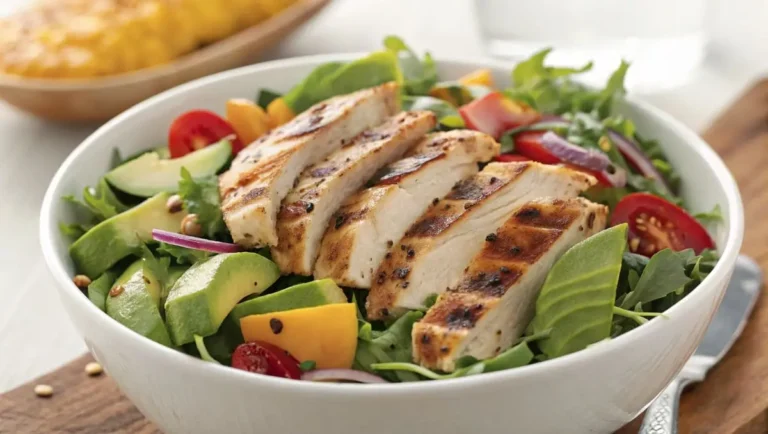The Ultimate Guide to Homemade Gluten Free Pizza
Hey pizza lovers! Are you missing out on pizza because of gluten? Well, get ready to rejoice! Tonight, we’re conquering the kitchen and making incredible Homemade Gluten Free Pizza that’s so good, you won’t believe it’s gluten-free. Forget those cardboard, disappointing gluten-free pizzas from the freezer aisle. We’re talking about pizza with a crust that’s crispy on the outside, chewy on the inside, and loaded with all your favorite toppings. Does that sound too good to be true? Trust me, it’s not! Let’s get started on your gluten-free pizza adventure!
Table of Contents
Why Homemade Gluten Free Pizza is a Game Changer

If you’re on a gluten-free diet, you know the struggle is real when it comes to pizza. Store-bought gluten-free pizzas can be pricey, often lack flavor, and sometimes… well, let’s just say they don’t always satisfy that pizza craving.
That’s where homemade gluten free pizza comes to the rescue! Making your pizza at home is a total game-changer for so many reasons:
- Taste & Texture Control: You get to create a crust that’s exactly how you like it – thin and crispy, thick and chewy, or somewhere in between. And the flavor? Out of this world!
- Freshness & Quality Ingredients: You control every ingredient that goes into your pizza, from the dough to the toppings. No mystery ingredients or preservatives here!
- Cost-Effective: Making pizza at home is significantly cheaper than buying pre-made gluten-free pizzas or ordering takeout.
- Customization Galore: The topping possibilities are endless! You can create your dream pizza with all your favorite veggies, meats, cheeses, and sauces.
- Fun & Rewarding: Making pizza from scratch is a fun activity, especially if you get the whole family involved. And there’s nothing quite like the feeling of accomplishment when you pull a perfect pizza out of the oven.
Mastering the Gluten Free Pizza Crust: Key Ingredients & Techniques
Table comparing different gluten-free flours for pizza crust.
| Flour Type | Texture | Flavor | Best Use for Pizza Crust |
| Brown Rice Flour | Slightly Gritty | Nutty | Base flour, adds structure and chewiness |
| White Rice Flour | Smooth | Neutral | Blends well, contributes to overall texture |
| Tapioca Starch | Stretchy, Chewy | Neutral | Creates elasticity and chew, essential for gluten-free crust |
| Potato Starch | Light, Fluffy | Neutral | Adds lightness and tenderness |
| Almond Flour | Slightly Coarse | Nutty, Sweetish | Adds flavor and moisture, use in smaller amounts |
| Gluten-Free Flour Blend | Varies by brand | Varies by brand | Convenient, pre-mixed, follow blend instructions |
The secret to amazing homemade gluten free pizza starts with the crust! Since we’re missing gluten (the protein that gives traditional pizza dough its elasticity and chew), we need to use a blend of gluten-free flour and starches to mimic those properties.
Essential Gluten Free Pizza Crust Ingredients
- Gluten-Free Flour Blend: Using a pre-made gluten-free all-purpose flour blend is often the easiest and most reliable way to get a good crust. Look for blends that contain a mix of rice flour, tapioca starch, and potato starch. Bob’s Red Mill Gluten Free 1-to-1 Baking Flour or King Arthur Measure for Measure Gluten-Free Flour are popular choices.
- Tapioca Starch (or Tapioca Flour): This is a must-have for gluten-free pizza crust! Tapioca starch adds that crucial chewiness and elasticity that gluten usually provides.
- Yeast: Just like traditional pizza dough, yeast is what makes our gluten-free crust rise and become light and airy. Use active dry yeast or instant yeast.
- Warm Water: To activate the yeast.
- Olive Oil: Adds flavor and moisture to the crust.
- Salt: Enhances the flavor of the crust and controls the yeast.
- Sugar (or Honey): A tiny bit of sugar or honey helps to feed the yeast and adds a touch of sweetness to balance the flavors.
- Xanthan Gum (Optional but Recommended): Xanthan gum is a binder that helps to improve the texture and structure of gluten-free baked goods. It’s especially helpful in pizza crust to prevent it from being too crumbly.
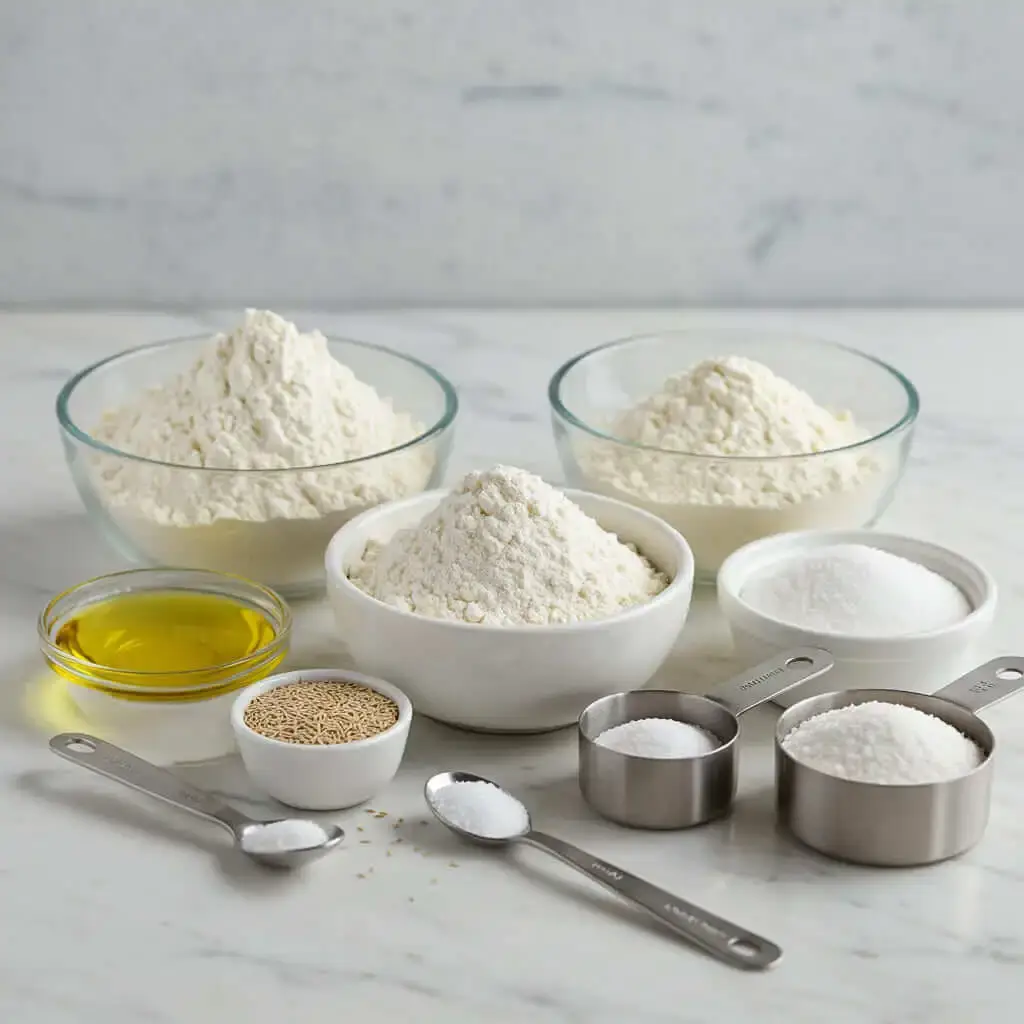
Step-by-Step Gluten Free Pizza Dough Recipe
Here’s a simple and reliable recipe for a delicious homemade gluten free pizza crust:
Homemade Gluten Free Pizza Dough
Yields: 2 medium pizzas
Prep time: 20 minutes
Rise time: 1 hour
Cook time: 15-20 minutes
Ingredients:
- 1 ½ cups warm water (about 105-115°F/40-46°C)
- 1 teaspoon sugar (or honey)
- 2 ¼ teaspoons active dry yeast (or 1 packet)
- 3 cups gluten-free all-purpose flour blend (with xanthan gum, if your blend doesn’t already contain it, add 1 teaspoon of xanthan gum)
- ½ cup tapioca starch
- 1 teaspoon salt
- 2 tablespoons olive oil, plus extra for greasing
Instructions:
- Activate the yeast: In a large bowl, combine warm water and sugar. Sprinkle yeast over the top and let it sit for 5-10 minutes, until foamy. This means the yeast is active and ready to go!
- Combine dry ingredients: In a separate bowl, whisk together gluten-free flour blend, tapioca starch, and salt.
- Mix wet and dry: Add the olive oil to the yeast mixture. Gradually add the dry ingredients to the wet ingredients, mixing with a wooden spoon or spatula until a shaggy dough forms. The dough will be quite sticky – this is normal for gluten free dough.
- Knead (sort of!): Gluten free dough doesn’t need traditional kneading. Instead, turn the dough out onto a lightly floured (with gluten-free flour) surface. Gently knead for about 2-3 minutes, just to bring the dough together into a smoother ball.
- First rise: Grease a large bowl with olive oil. Place the dough in the bowl, turning to coat it with oil. Cover the bowl with plastic wrap or a clean kitchen towel and let it rise in a warm place for about 1 hour, or until doubled in size.
- Preheat oven and prepare baking surface: Preheat your oven to 450°F (232°C). Place a pizza stone or baking sheet in the oven to preheat as well. If using a pizza stone, preheat for at least 30 minutes.
- Divide and shape the dough: Punch down the risen dough gently. Divide it in half for two medium pizzas. On a piece of parchment paper lightly dusted with gluten-free flour, shape each dough portion into a circle using your hands or a rolling pin. desired pizza shape. The gluten free dough can be a bit delicate, so working on parchment paper makes it easier to transfer to the oven.
- Add toppings and bake: Carefully transfer the parchment paper with the pizza dough to the preheated pizza stone or baking sheet. Top with your favorite pizza sauce, cheese, and toppings.
- Bake for 15-20 minutes, or until the crust is golden brown and the cheese is melted and bubbly.
- Cool slightly and serve: Let the pizza cool for a few minutes before slicing and serving. Enjoy your amazing homemade gluten free pizza!
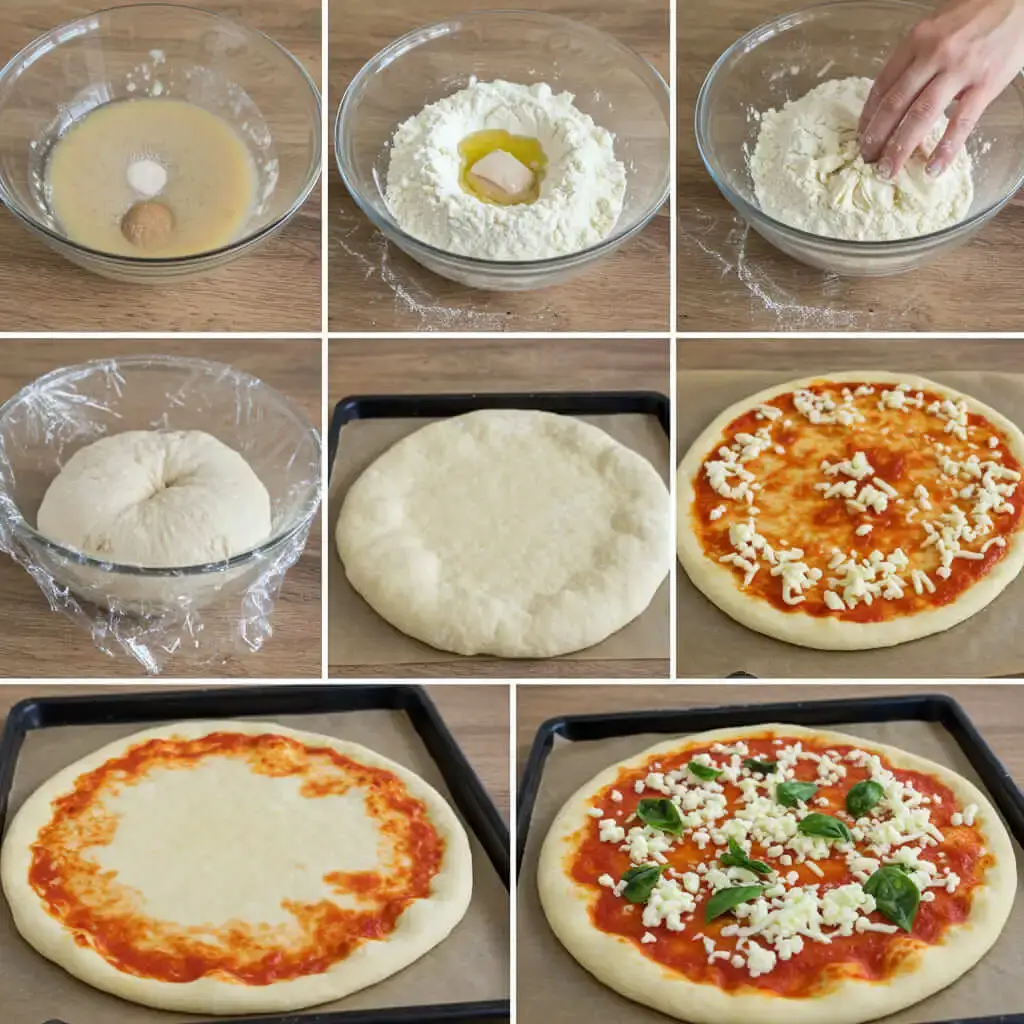
Tips for Gluten Free Pizza Crust Success
- Use warm water: Water that’s too hot will kill the yeast, and water that’s too cold won’t activate it properly. Aim for lukewarm water, around 105-115°F (40-46°C).
- Don’t overmix: Overmixing gluten-free dough can make it tough. Mix just until the ingredients are combined.
- Embrace the stickiness: Gluten-free dough is naturally stickier than traditional dough. Don’t add too much extra flour, or your crust will be dry. Lightly flouring your hands and work surface is enough.
- Preheat your baking surface: Preheating a pizza stone or baking sheet is crucial for a crispy crust. It helps the bottom of the pizza cook quickly and evenly.
- Bake at high heat: A hot oven is key for a nicely browned and crispy pizza crust.
- Parchment paper is your friend: Using parchment paper makes it much easier to transfer the delicate gluten free pizza dough to and from the oven, preventing sticking and tearing.
Sauce it Up! Gluten Free Pizza Sauce Ideas
The sauce is the soul of your pizza! Luckily, most traditional pizza sauces are naturally gluten-free. Here are some delicious and easy sauce options:
- Classic Marinara: A simple and flavorful tomato-based sauce. Use store-bought marinara sauce, ensuring you check the label to verify it’s gluten-free (most are!). Or, make your homemade marinara for an even fresher flavor.
- Pesto: A vibrant green sauce made with basil, pine nuts, garlic, Parmesan cheese, and olive oil. Pesto adds a burst of fresh, herby flavor. Note: Traditional pesto contains Parmesan cheese, which is dairy. For dairy-free, use a vegan pesto or omit the cheese.
- White Garlic Sauce (Alfredo-style): A creamy and rich white sauce made with butter, garlic, cream, and Parmesan cheese. Perfect for white pizzas with chicken, mushrooms, or spinach. Note: This sauce is dairy-based. For dairy-free, look for vegan Alfredo sauce options.
- • BBQ Sauce: To add a smoky and tangy twist, use your favorite gluten-free BBQ sauce as a pizza base. Great with chicken, red onion, and cilantro. Always double-check BBQ sauce labels to ensure they are certified gluten-free, as some brands may contain gluten.
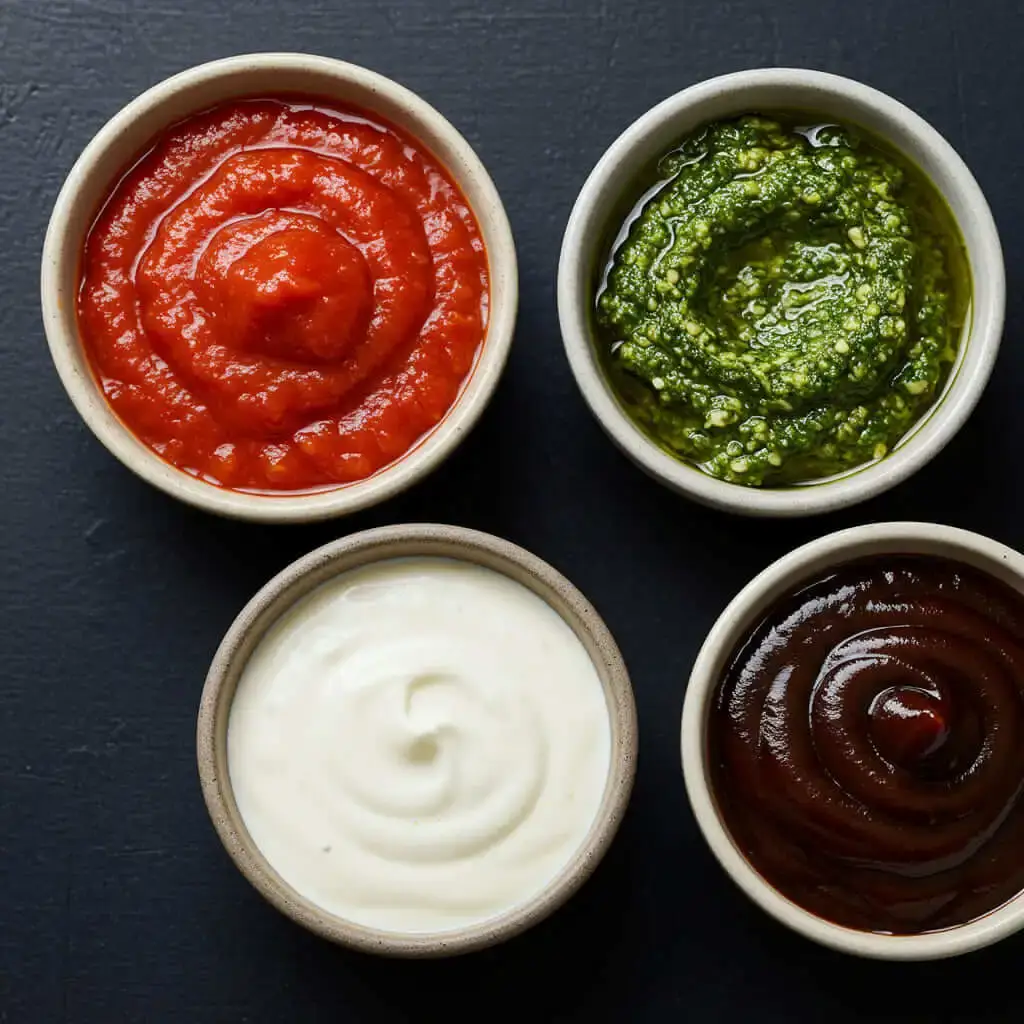
Top it Off! Gluten Free Pizza Topping Inspiration
| Veggies | Meats | Cheeses | Other |
| Bell Peppers | Pepperoni | Mozzarella | Fresh Basil |
| Onions | Sausage | Provolone | Red Pepper Flakes |
| Mushrooms | Cooked Chicken | Ricotta | Olive Oil Drizzle |
| Olives | Bacon | Parmesan (Dairy) | Gluten-Free Pesto Swirl |
| Spinach | Ham | Vegan Mozzarella | |
| Artichoke Hearts | Ground Beef | Vegan Parmesan | |
| Roasted Vegetables | Prosciutto | Feta (Dairy) | |
| Pineapple | Goat Cheese (Dairy) |
The fun part – loading up your homemade gluten free pizza with delicious toppings! Get creative and use your imagination! Here are just a few ideas to get you started:
- Classic Pepperoni & Mushroom: A timeless combination that everyone loves.
- Margherita: Simple and elegant with fresh mozzarella, tomatoes, and basil.
- Veggie Supreme: Load up on your favorite vegetables like bell peppers, onions, mushrooms, olives, spinach, and artichoke hearts.
- BBQ Chicken: Use BBQ sauce as the base, and add cooked chicken, red onion, cilantro, and cheddar cheese (or a dairy-free alternative).
- White Pizza with Spinach & Ricotta: Use white garlic sauce, spinach, ricotta cheese (or vegan ricotta), and a drizzle of olive oil.
- Prosciutto & Fig: A gourmet combination with fig jam (check for gluten-free), prosciutto, goat cheese (or vegan goat cheese), and arugula (added after baking).
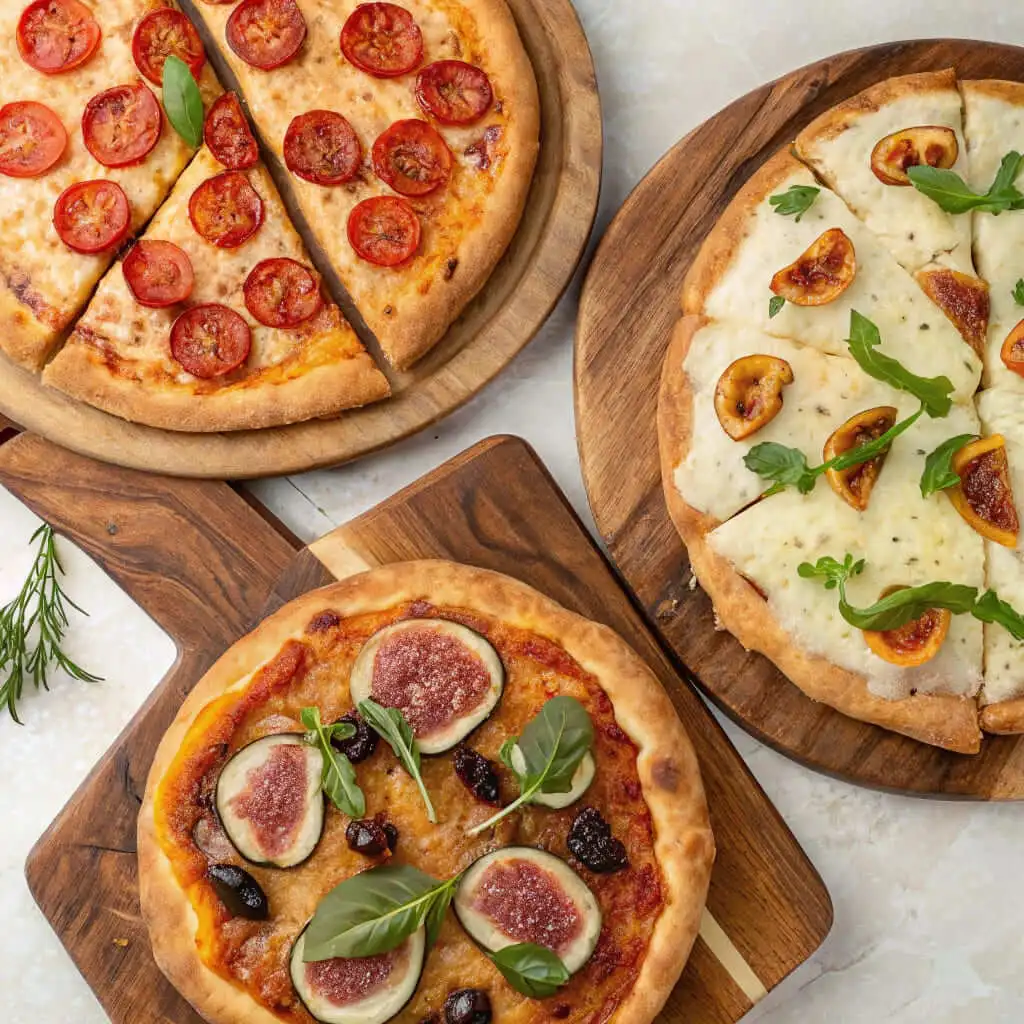
Health Benefits of Homemade Gluten Free Pizza
Nutritional comparison table – Homemade Gluten Free Pizza vs. Store-bought Gluten Free Pizza vs. Regular Pizza.
| Type of Pizza | Calories (per slice, approx.) | Fat (g) | Sodium (mg) | Fiber (g) | Protein (g) |
| Homemade Gluten Free Pizza | 250-350 | 10-15 | 300-500 | 2-4 | 10-15 |
| Store-bought Gluten Free Pizza | 300-450 | 15-25 | 500-800+ | 1-3 | 8-12 |
| Regular Pizza (Wheat Crust) | 200-300 | 8-12 | 400-600 | 1-2 | 8-12 |
Homemade Gluten Free Pizza, when made with wholesome ingredients, can be a healthier and more nutritious option compared to store-bought gluten-free pizzas and even regular wheat-crust pizzas.
- Control over Ingredients: You choose the quality of your ingredients, opting for fresh vegetables, lean proteins, and healthier fats like olive oil. You can also control the amount of salt, sugar, and oil used.
- Higher in Fiber (potentially): Using gluten-free flour blends that include whole grain flours like brown rice flour or sorghum flour can increase the fiber content of your pizza. Adding plenty of vegetables also boosts fiber intake.
- Lower in Sodium (potentially): Store-bought pizzas, both gluten-free and regular, are often high in sodium. Making your pizza allows you to control the salt content.
- Suitable for Gluten-Free Diets: Of course, the biggest benefit is that it’s perfect for those with celiac disease, gluten sensitivity, or anyone following a gluten-free diet!
Frequently Asked Questions (FAQ) About Gluten Free Pizza
Q: Can I make gluten-free pizza dough ahead of time?
A: Yes, you can prepare gluten-free pizza dough ahead of time. After the first rise, punch down the dough, divide it, and wrap each portion tightly in plastic wrap. Store in the refrigerator for up to 2 days. Let the dough come to room temperature for about 30-60 minutes before shaping and baking.
Q: Can I freeze gluten-free pizza dough?
A: Yes, you can freeze gluten-free pizza dough. After the first rise, punch down the dough, divide it, and wrap each portion tightly in plastic wrap and then in a freezer bag. Freeze for up to 2-3 months. Thaw in the refrigerator overnight before using.
Q: My gluten-free pizza crust is soggy in the middle. How can I prevent this?
A: Soggy crust can happen if there’s too much moisture. Make sure you don’t overload the pizza with toppings, especially watery vegetables. You can also pre-bake the crust for 5-7 minutes before adding toppings to help it set up a bit. Preheating your pizza stone/baking sheet and baking at a high temperature is also crucial for a crispy crust.
Q: Can I make gluten-free pizza on the grill?
A: Yes, you can grill gluten-free pizza! Preheat your grill to medium-high heat. Shape the dough and place it directly on the grill grates. Grill for a few minutes per side until lightly golden and set. Then, remove from the grill, add toppings, and return to the grill (or oven) to finish cooking until the cheese is melted and the toppings are heated through.
Q: What if I don’t have xanthan gum? Can I still make gluten-free pizza?
A: While xanthan gum is recommended for the best texture in gluten-free pizza crust, you can still make pizza without it. The crust might be a bit crumbly, but it will still be delicious. If you omit xanthan gum, you might want to add an extra tablespoon of olive oil to the dough for moisture.
Conclusion: Gluten Free Pizza Perfection is Within Reach!
“Life is what you bake of it.”
Homemade Gluten Free Pizza is not just a substitute for regular pizza; it’s a delicious and satisfying meal in its own right! With the right ingredients and simple techniques, you can create a gluten-free pizza that rivals any pizza out there.
So, ditch those disappointing store-bought options and get ready to roll up your sleeves and make some pizza magic! Gather your gluten-free flours, and your favorite toppings, and get ready for a pizza night that everyone, gluten-free or not, will love. Happy pizza making!

Loved making this? Share your experience in a review!
There are no reviews yet. Be the first one to write one.



